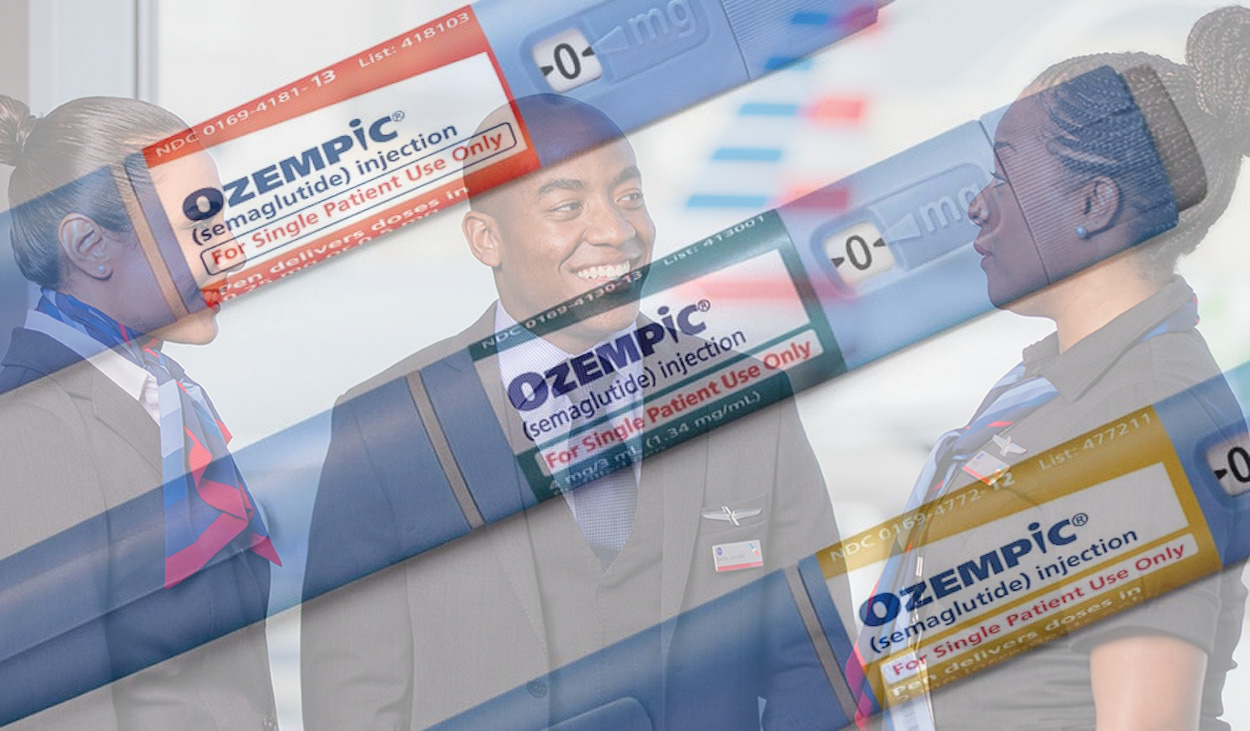American Airlines Drops Ozempic Coverage, Flight Attendants Push Back

Ozempic may still be flying high in America, but not in American Airlines’ employee health plan.
American Airlines Cuts Ozempic From Flight Attendant Healthcare Coverage
Starting January 1, 2026, American Airlines flight attendants will lose insurance coverage for popular GLP-1 medications such as Ozempic and Mounjaro, unless they have a formal diagnosis of Type 2 diabetes. The change was quietly disclosed in an October 17 notice from the Association of Professional Flight Attendants (APFA) outlining updates to next year’s benefit plans.
According to the union, the company’s insurer, Blue Cross Blue Shield of Texas, will restrict coverage for these drugs to diabetic use only. For flight attendants using GLP-1s for weight management, an increasingly common prescription in recent years, the out-of-pocket cost could soar to over $1,000 per month. The APFA says it was not consulted in advance about the change and has already requested meetings with management to discuss alternatives or exceptions for medically supervised weight-loss programs.
The company has chosen to bypass these alternatives and pursue outright exclusion for all employees, even with the growing recognition of obesity as a chronic disease.
This decision was made unilaterally by American Airlines. This change reduces the value of your healthcare coverage and strips treatment options Members rely on for prevention and quality of life. Your Union will continue to fight to have these medications covered for weight management.
We are urging all affected Members and those who stand in solidarity to contact company representatives directly. Voice your concerns about this decision. Share how this change impacts you, your family, or your ability to manage your health. Every message matters.
Rising Costs, Shrinking Coverage
Like many employers, American faces skyrocketing costs from GLP-1 prescriptions, which have become the fastest-growing category in U.S. healthcare spending. Industry analysts estimate that each covered employee using a GLP-1 adds between $6,000 and $13,000 per year to a corporate insurance plan. Some companies have sought to negotiate rebates or cap coverage at specific body-mass-index thresholds, but others—like American—are taking the simpler route of elimination.
Critics argue that restricting GLP-1s only to diabetics undermines the medical benefits of weight management, particularly in professions that demand physical endurance and frequent travel. Flight attendants have cited the long-term metabolic and cardiovascular improvements linked to GLP-1 therapy, as well as the drugs’ role in reducing fatigue and joint stress during long shifts on their feet.
The APFA has pledged to challenge the decision, warning that selective coverage could set a precedent affecting thousands of crew members. Union leaders say they will explore whether the move violates existing collective-bargaining agreements or ERISA benefit-continuity standards. Flight attendants have also been encouraged to write AA executives directly to express their dismay with this policy change.
Meanwhile, President Trump has vowed to reduce the price of Ozempic to around $150/month, though Dr. Mehmet Oz, his administrator of the Centers for Medicare & Medicaid Services, said no deal has been reached yet:
CONCLUSION
Healthcare costs are a legitimate concern for any employer, but this change underscores the growing tension between corporate cost control and employee wellness. GLP-1 drugs are no longer niche, they’re part of a modern health landscape that blurs the line between treatment and prevention. But while I’m not an Ozempic expert, the cost is currently staggeringly high and the long-term results are unknown. It could be that flight attendants at AA may one day thank their company for being so cheap…
Hat Tip: One Mile At A Time